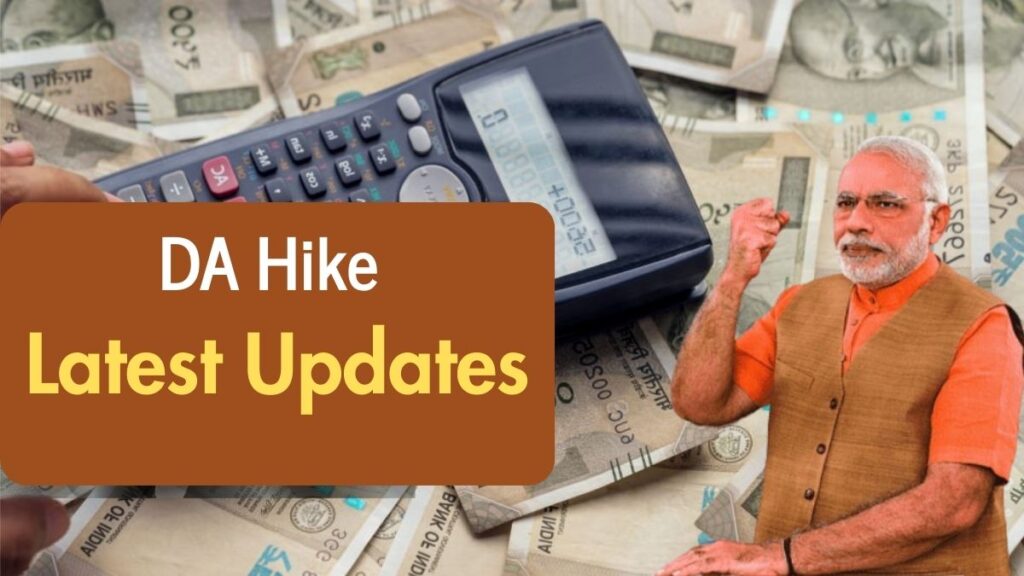Good news for millions of central government employees and pensioners!
The Union Cabinet, headed by Prime Minister Narendra Modi, has given the green light for a 3% Dearness Allowance (DA) hike, effective from July 1, 2024. This move is aimed at helping workers and pensioners cope better with rising prices and inflation, and it also includes an increase in Dearness Relief (DR) for pensioners.
On Wednesday, the Cabinet approved this 3% DA hike, which raises the existing DA from 50% to 53% of basic pay. Pensioners will see the same percentage increase in their Dearness Relief, which acts as a cushion against inflation.

The government said this additional instalment is meant to compensate public sector employees and pensioners for the price hikes they’ve been facing.
The Union Cabinet, chaired by Prime Minister Narendra Modi, confirmed that pensioners will also get a 3% boost in their DR. The move is part of the government’s ongoing efforts to support its employees amidst economic challenges.
How Much Will It Cost the Government?
This DA and DR revision will cost the government around ₹9,448 crore annually. That’s a significant amount, but it’s worth it considering the number of people it benefits — approximately 49.18 lakh central government employees and 64.89 lakh pensioners.
The adjustment is made twice a year, on January 1 and July 1, based on the Consumer Price Index for Industrial Workers (AICPI-IW), which tracks inflation across the country. The latest hike is meant to help preserve the real value of employees’ salaries in the face of inflation.
Updates on Arrears
Since the hike is effective from July 1, employees will receive arrears for July, August, and September along with their revised salaries. This means a lump sum payment to cover the difference for those months, providing some immediate relief.
Progress of DA Hikes in 2025
While this 3% hike is good news, the excitement is building for what’s coming next. The government has also announced that another round of DA hikes is scheduled for July 1, 2025.
The first increase of this year was a 4% jump on January 1, and now, industry insiders and government sources are predicting that the upcoming increase could be around 4-5% due to persistent inflation concerns.
If these projections hold true, the DA could rise from the current 50% to around 55%, giving employees a much-needed boost to their earnings amid the rising cost of living.
Why Is DA Hike Important?
The biannual DA adjustments are crucial because they help maintain the purchasing power of government employees. With inflation constantly eroding the value of money, these hikes act as a safety net, ensuring that salaries don’t lose their real worth. This move also signals the government’s commitment to supporting its workforce during tough economic times.
Impact on the Pay Scale
To give a quick example of how this affects salaries: before the recent merger, a basic salary of ₹18,000 with a 50% DA amounted to ₹9,000, making the total ₹27,000.
After the merger, the basic salary increased to ₹27,000, with a 4% DA adding ₹1,080, bringing the new total to ₹28,080. Such changes help employees feel a little more secure financially.
How Is DA Calculated?
The DA hike depends heavily on the All India Consumer Price Index for Industrial Workers (AICPI-IW).
This index is released monthly by the Labour Bureau and tracks inflation across different sectors. For example, the CPI data for January is released in February, for February in March, and so on.
Based on these figures, the government decides whether to increase DA or not. The upcoming index figures, expected to be out by July 31, will determine whether the DA rises by 4% in August 2025.
Expectations in August 2025
Most inflation experts believe that DA will likely increase by around 4% starting in August 2025, but the final numbers depend on the CPI data to be released soon. The government is closely monitoring inflation trends, and the official index figures will be the basis for the final decision.
A Step Towards Employee Welfare
The DA hike in the 7th Pay Commission is a positive step for central government employees and pensioners, helping them counter the rising prices.
While the current increase is 3%, the upcoming hikes in 2025 could provide further relief, especially if inflation remains high.
Employees and pensioners should keep a close watch on official announcements for the exact percentage increase. With these hikes, the government aims to support its workforce and ensure their income keeps pace with the economy’s changing landscape.